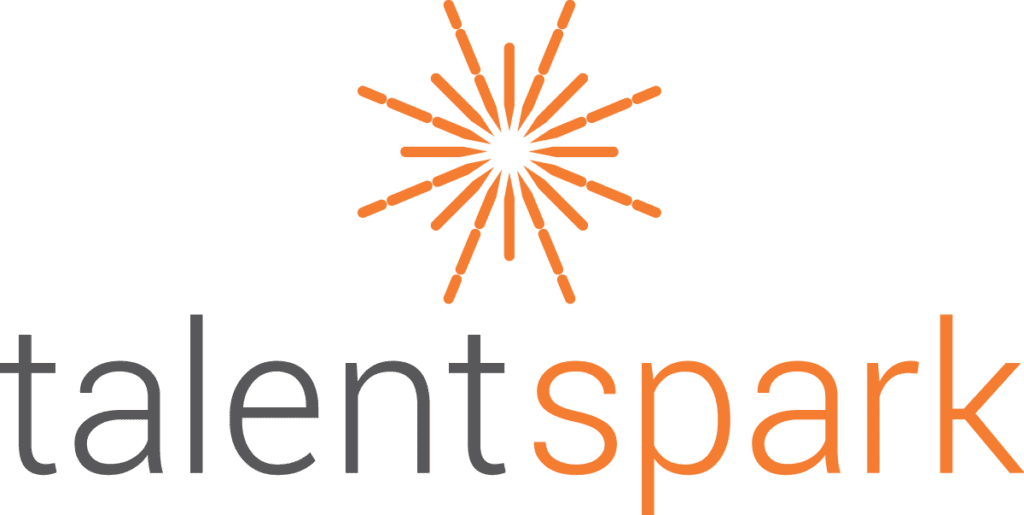Some recruiting processes feel like a train wreck in slow motion. We can see it coming a mile away (and so can your top candidates!).
The role’s been open too long. No one agrees on what success actually looks like. Interviews drag on. And on. And on. Meanwhile, top talent slips through the cracks — and your recruiting process starts to break down.
At TalentSpark, we’ve seen it all. As a trusted recruiting partner, we know how easy it is for a hiring strategy to get off track. These six red flags show up again and again — across industries, team sizes, and job types. And when they do, they don’t just slow things down. They signal a process that’s about to go off the rails.
Here’s what to watch for — and what to do about it before it costs you the right candidate.
Red Flag #1: No Alignment on What Success Looks Like
When teams can’t agree on what they actually want in a candidate, the process stalls, or worse, moves forward with no clear direction. Everyone’s chasing their own version of the “ideal” hire, with different job responsibilities in their minds, and no one’s willing to compromise.
We see this most often in multidisciplinary hiring teams, where people from different parts of the organization are weighing in on what they want. Let’s look at the example of a CFO. One wants someone who can “own the numbers.” Another’s prioritizing process improvement. A third wants someone who will “challenge the status quo.” Someone wants a degree for a top school. Another still would rather see work experience.
The result is confusion at every step: job descriptions are vague or all over the place, interviewers ask different questions, and candidates walk away unsure of their chances and what would be expected of them if they were hired.
It’s like deciding to bake a vanilla cake — and then Bob from finance insists on adding raisins. No one else wants raisins. Raisins don’t belong in a vanilla cake. But Bob’s fixated on this one odd ingredient because it reminds him of a past success or a personal preference. And at the end of the day, you end up with a cake that would get you sent home halfway through The Great British Bake Off. It sounds ridiculous because it is.
What to Do Instead
Get crystal clear on the must-haves before you open the role. Align your team on what success in the role actually looks like — not just the responsibilities, but the outcomes, behaviors, and priorities. Define the non-negotiables and where there’s room to flex. If there’s disagreement, talk it out early. Your recruiter can help facilitate that conversation, find common ground, and translate it into a job description and interview plan that everyone’s aligned on.
Red Flag #2: Overweighting Technical Skills and Ignoring the Human Side
This one’s tricky, because technical ability does matter. But when it becomes the only focus, you risk hiring someone who looks great on paper but fails to perform and disrupts the team in practice.
We’ve seen hiring teams pass on great candidates because they “only” had 80% of the technical checklist, but yet that candidate would’ve brought the soft skills, maturity, and adaptability to thrive long-term. They hire the “perfect” expert who can’t communicate, take feedback, or build trust. To find the best candidate for the job, you may need to break out of your hiring comfort zone.
And sometimes, leaders say they want a culture-changer. Someone to shake things up. That’s fine — if everyone is aligned and ready for it. But what often happens? When that person pushes boundaries, suddenly, they’re “not a fit.” You can’t have transformation without tension, and not every team is ready for it.
What to Do Instead
Balance hard skills with soft ones. Define the behaviors, attitudes, and approaches that matter. Prioritize adaptability, trust-building, and team alignment. And if you’re hiring a change-maker, make sure the team actually wants change — not just talks about it.
Red Flag #3: No Plan for How to Evaluate Candidates
We get it — sometimes you’re figuring things out as you go. But if you don’t have a clear plan for how you’re evaluating candidates, your recruiting process is setting everyone up to fail.
We’ve seen hiring processes stretch into 7 or 8 rounds because no one agreed up front on who’s assessing what. Interviewers ask overlapping or irrelevant questions. Candidates leave confused and decision-makers struggle to compare notes.
Lack of structure doesn’t just slow things down — it kills momentum, frustrates internal stakeholders, and sends the wrong message to top candidates.
What to Do Instead
Outline the evaluation criteria and process before you start. Decide who’s evaluating which skills. Your recruiter can help build a streamlined plan that gives everyone a clear role and clear criteria, and gives the candidate a confident, consistent experience.
Red Flag #4: No Sense of Urgency
Dragging out the recruiting and hiring process doesn’t guarantee a better hire. Quite the opposite, in fact.
It looks like this: Top candidates are always in motion. They’re interviewing elsewhere, weighing offers, and reading between the lines. If your process lacks appropriate pacing, clarity, or follow-through, they’ll take it as a sign: this team doesn’t really want me.
Even great candidates start to spiral when they’re left waiting too long. They lose confidence, lose interest, or get scooped up by someone who moves faster. In fact, according to one study, 32% of candidates who withdrew from the hiring process did so because they accepted another offer.
What to Do Instead
Set a tempo. Communicate timelines clearly. Follow up fast. In short, keep candidates engaged throughout the hiring process. Urgency lets candidates know that you respect their time and it builds trust. Silence and delays do the exact opposite. Establishing a sense of urgency also means you won’t lose top candidates and you’ll fill the role more quickly.
Red Flag #5: Treating Your Recruiter Like a Resume Vending Machine
If you’re treating recruiting like a one-way transaction — “send us candidates, we’ll take it from here” — you’re missing the real value of the relationship.
We’re not just here to send you resumes so you can fill roles. We’re here to understand your business, your team, and what success really looks for you.
That only works if we’re fully in the loop. When communication goes quiet — no feedback, shifting priorities, or changes without context — it creates confusion, stalls the process, and frustrates strong candidates. They’re left guessing. So are we.
What to Do Instead
Help us help you. Let us get in your heads and in your business. The more we know — about your goals, your challenges, your team dynamics — the better we can tailor the search. We’re here to match great people with great jobs, but we can only do that when we’re working closely together.
Red Flag #6: No Agreement on Compensation
We’ve seen it too many times: a hiring team gets deep into the recruiting process, finds someone they love, and only then starts talking about budget for the role. The result? A strong candidate walks, and weeks of work go to waste.
Waiting to “see who’s out there” before setting a salary range isn’t strategy. And in today’s hiring market, it sends the wrong signal.
Candidates want clarity. So do recruiters. Without it, conversations drag, offers get rejected, and trust breaks down on all sides. In fact, according to a survey from ResumeLab, 80% of job seekers are less likely to apply for a position without a listed salary range.
What to Do Instead
Get aligned on compensation before the search starts. Know your range, your flexibility, and your walkaway point. A realistic, well-communicated, competitive compensation plan keeps everyone focused and makes candidates more likely to accept your offer.
What These Red Flags Are Really Telling You
Recruiting and hiring doesn’t usually break because of one big mistake. It breaks when small issues stack up — unclear expectations, slow feedback, inconsistent interviews — until momentum stalls and strong candidates say, “I’m out.”
The good news? Every one of these red flags is fixable, with the right strategy, the right people at the table, and the right recruiter in your corner.
At TalentSpark, we don’t only send you resumes. We partner with you to get it right — by asking better questions, challenging assumptions, and staying focused on what success really looks like. That’s why our placements have an industry-leading retention rate of 93%.
If you’re struggling with your recruiting and hiring process, we’d love to talk about how to effectively recruit your next open roles.










